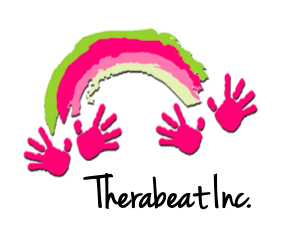Hello!
My name is Jackson Arnold and I am one of the new music therapy interns at Therabeat, Inc.! I am so excited and grateful to start my journey here at the In Harmony Pediatric Therapy offices, and if these first two weeks are any indication of how great the next six months will be, we are all in for an informative and inspirational adventure for sure!
Although I was not aware that Music Therapy was a career option when I was young, you could easily say that I have been preparing for this career my entire life, starting with my love for music. Growing up, our house was always filled with music, and usually filled with my family singing or dancing along to the music! From there it was singing in church, and school, and then band, then elementary choir, then musicals, then marching band, then college choirs, then opera, then piano, then guitar…and even to this day, I am still learning and soaking up all the music my heart and soul can hold!
Early in my senior year of high school, I was introduced to a very special person that opened the most amazing door to the path that would allow me to follow my passion (music) and my purpose (caring for others) as a career in music therapy! While researching the educational path for a music therapist, I was simultaneously learning to navigate a (then) recent diagnosis of Type 1 Diabetes. After being accepted to multiple universities, I decided with the support of my family to stay close to home and attend Kennesaw State University for the initial two years of college while I acclimated to the diabetic lifestyle. During my time at KSU, I immersed myself in their choral music education program, participating in multiple vocal education studies, chorus groups, and one of my favorite experiences–opera. When my second year was underway, I knew that it was time to start making preparations to transfer into a music therapy program, which was not offered at Kennesaw State. Forever grateful for my experience at KSU (Hooty-Hoo!), in the fall of 2020 I transferred to begin my coursework and clinical experience in music therapy, officially making me a Georgia Bulldog (Go Dawgs!).
As I continued my education at UGA, I began my clinicals and participated in additional music therapy opportunities, I was further convinced that music therapy was the perfect fit for me. Every opportunity to engage with another individual or group through music continues to solidify what I know to be true, that music reveals (memories, skills, stories), heals (pain, trauma, hurdles), and gives us ALL the feels (so many emotions)! And quite simply–music makes the world go round!
So now my coursework at UGA is complete, I have walked across the stage during graduation, and now all that is left to complete my formal UGA Music Therapy degree is a six month internship with Therabeat. My experiences so far have been incredible, participating with some amazing people in music camp. In addition to this, I was able to observe not just the wonderful music therapists, but some of the amazing interdisciplinary teams as well, including physical therapists, occupational therapists, and speech therapists! The amount of skill and dedication in this team of many talents is truly astonishing and I am so lucky to say that I am a part of the Therabeat and IHPT teams!
Can’t wait to see you at Therabeat!
~Jackson Arnold






